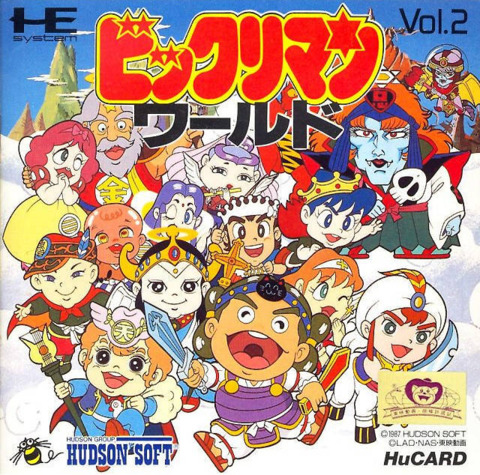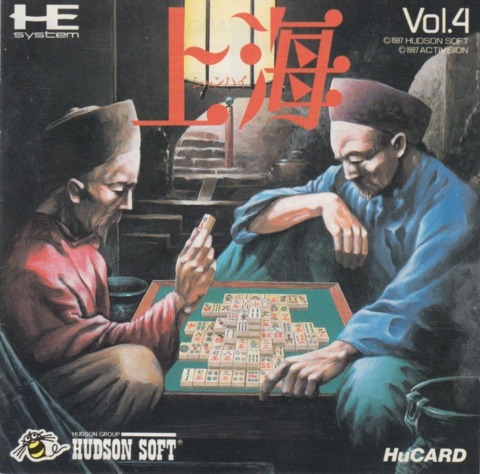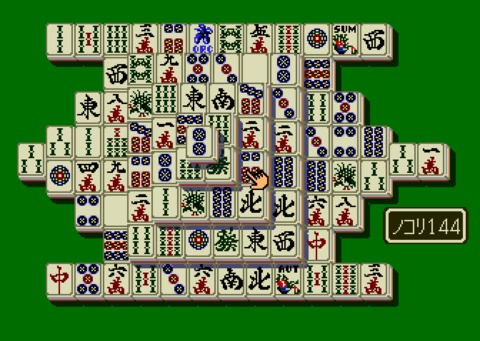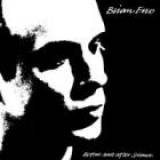HuCARTography I: The Opening Salvo
By ElectricViking 6 Comments
Promises made, promises kept. For now. This week I'll be covering the first two PC Engine games to tumble into this world, both of which arrived at launch.
Bikkuriman World
Developer/Publisher: Hudson | 30 October 1987 (JP)
Foreknowledge
Okay. Here we go. *produces Charlie Day conspiracy board*
Bikkuriman World is a reskin of Wonder Boy in Monster Land, which is the second game in the Wonder Boy series. That is not to say that it is a reskin of Wonder Boy II, as that game doesn’t exist. This game, and by extension Wonder Boy in Monster Land, also exists as Super Wonder Boy in Monster World, which is not related to the actual Wonder Boy in Monster World, aka Wonder Boy V: Monster World III. All of these games are of course canonical prequels to Wonder Boy III: The Dragon’s Trap, also known as simply Dragon’s Curse; said game was of course followed by Wonder Boy V, aka Wonder Boy in Monster World, *then* Monster World IV, and finally Monster Boy and the Cursed Kingdom twenty five years later. This game, which again is called Bikkuriman World and is a reskin of Wonder Boy in Monster Land, would also be reissued by Hudson in 2005 on mobile platforms as Super Adventure Island, no relation to the actual game called Super Adventure Island for the SFC/SNES. Did I mention this series is also how we got Whomp ‘Em on the NES? Or how this series turns Jeremy Parish into the fucking Jokerman when he has to talk about one of the entries?

In any event, Wonder Boy in Monster Land is here in its Bikkuriman World guise as part of a licensing deal between Hudson and Toei. The latter were the producers of the Bikkuriman anime. Said anime is spun from the Bikkuriman child’s snack line. These snacks included little sticker/decal gimmicks themed around celestial beings, with rarity tiers and foils. This led to some fairly vicious collectable-adjacent behavior which, in due course, led to an investigation by the Japanese government over fears that the snacks were promoting gambling to children.
Did I mention this game says “Vol. 2” on the cover? We’re off to a truly incredible start here.
All that being said, I have played multiple versions of this game including the one on the pillory today. I’ve always found WBiML to be an uncomfortable fit for the arcade, as it winds up being a little too complex of an action-RPG thing compared to, say, Dragon Buster. Gimme the straightforward platforming of Wonder Boy, or the whip-sploration of The Dragon’s Trap over this any day. Still, the arcade game has its fans. But how does it play with an obscure anime/snack tie in?
Hindsight
Eh.
The underlying game is fine, but I’m taking the Master System version over this all day. I’d honestly rather talk about that port than this, but alas. This is fundamentally the same game, and in some sense cleaves closer to the arcade original than its Mark III alternative. Whereas that version uses the entirety of the SMS render resolution to show you The Game You Are Playing, Bikkuriman World opts for a large slab of UI elements on a gray background on screen at all times, leaving a smaller window for The Actual Game and thereby less awareness of your broader surroundings. Odd choice, but it’s the choice Westone made in the original. So I guess that’s neat.

On the other hand, I super hate the new sprites. Wonder Boy has a very simple, round anime vibe that points towards your Tesuka-esque works. The pig man bartender from Wonder Boy III is a gotdang icon. Here, every NPC and boss is basically a crushed 2D drawing of a character from the Bikkuriman universe. These are all vaguely angelic/demonic characters, all of which are visually busy, squished down into not enough pixels and less color depth than a televised anime would allow. They range from “okay” to “you really did launch your console with this, huh” levels of acceptable.
As for the gameplay itself, it’s Monster Land. The original arcade iteration does allow you to credit feed your way through the game, until the final level. This version does have a simple Up + Run code that allows the player to continue from their last level after dying, complete with their entire inventory and items in stock. For reference, the SMS game has zero continues to speak of, and when you combine that with the ever present in-level timer of these games it is by a good measure the hardest version of the game. This, by contrast, winds up being the easiest.
That said, when you factor in some missing animations in this version (mainly doors that don’t visually open) and the FM Synth support included in the Master System version, I would still recommend that version of Monster Land over Bikkuriman World. I’d also recommend the next Wonder Boy game in the series over this one on all platforms, and the good news is that game does show up on the PC Engine eventually. For now though, here’s to a game based on snack wafers that required a government crackdown to keep kids from gambling.
Also, not that it is strictly necessary, there is a complete fantranslation patch for Bikkuriman World available at Romhacking.net. If you simply must play a version of this game where pixelated angels and demons from a snack food pack in give you single text box tips in English, that is doable.
******
Number of snack wafers consumed while playing: 1
Ratio of bad NPCs to pig men bartenders: Infinite
Turbo Ratio: Non applicable. Bikkuriman World received no US release. When you factor in the PAL version of Wonder Boy in Monster Land runs on US Master Systems with zero issue, let’s say your broader Bikkuriman World/Monster Land Ratio for CIB is 5 to 6.

******
Shanghai
Developer/Publisher: Hudson | 30 October 1987 (JP)
Foreknowledge
Now, I’m a dang north American person. I’ve played baseball, I’ve ice fished the upper reaches of the Mississippi River, and I even indulge in a steak once or twice a year now. That also means that “mah jongg” to me simply meant “solitaire mahjongg”, aka Shanghai.
Fun fact: Despite its theming and title, the game of Shanghai is itself of North American origins. Eagle noise.
Fun fact: That eagle noise isn’t even an eagle! Eagles sound like dolphins! Laughing dolphins! My neighborhood is thick with them!
As it turns out Shanghai was one of the most ubiquitous games of its day, beginning life on the Macintosh in 1986 before receiving conversions on most remotely viable home computer and console platforms through 1990. Its sequels would continue this trend.

I’m going to briefly talk about my own life here. Amidst the pandemic, I came into a cosmetically damaged Core Grafx. This, *as you know*, was the second revision of the PC Engine, designed in part to smush a minor audio bug that manifested in a handful of games games. I have since paid to have the system recapped and tuned up by Sound Retro in Seattle, and have affixed it with a Super SD system. I run this sucker to a genuine 24” CRT over composite video, as all seeing Odin intended. In this way I have easy access to everything short of SuperGrafx games on actual hardware, loaded onto a relatively small SD card.
I mention this all because I have a small collection of Japanese HuCard games as well, and will pick up a few more of the worthwhile ones before it becomes A Problem (see: Jeff and his JP Mega Drive collection). Shanghai is one such HuCard, as I figure I should have at least one “launch” game from each platform I have. Call it a compulsion. In any event, here is the oldest PC Engine game I have tooled around with via inserting one of these little card gimmicks into a genuine console. I wonder if it is, in fact, the Shanghai I recall?
Hindsight
Yep, that’s Shanghai!
My first response to this title is just how strange it is to see an Activision copyright on a 1987 game developed by Hudson, released exclusively in Japan on a dang HuCard. Not that there’s much time to ponder this turn of events, as PC Engine Shanghai immediately thrusts you onto a basic “turtle” layout of tiles.

Now I’ve put in some time with games of this lineage and there was a period where I was churning through a couple rounds of Microsoft Mahjong every day. Yes, filthy casual shit. I bring this up, because the first layout of this game is a bit of a bastard. There is something of an art to building Shanghai boards, as it were, and randomly spewing out a pile of 144 tiles can create arrangements that require zero margin of error play to complete. Having been completed and burned to EEPROMs by autumn 1987, to be played on a system running on 6502 derivatives scaled down for home console use, Shanghai is not capable of true random generation of tile sets. To that end, the developers at Hudson went with the elegant solution of surfacing all 50 puzzles included in the game from the jump, via a very slick window-based menu system. This does have the side effect of starting each game at the same board every time, and requiring a brief engagement with the Japanese language.
But hark! Those loveable scamps at Romhacking.net have you covered once again. Shanghai gets a translation, meanwhile both of the Tengai Makyou games, Linda Cube, Tokimeki Memorial, Cosmic Fantasy 1, etc. all sit untranslated as of the time of this writing. Nuts, I say!
As to the game, it’s tile matching with 50 boards and three music tracks. If for some reason you find the PC Engine controller more comfortable than playing one of the thousands of clones of this game available for free online with a mouse, this meets the brief. A very no frills puzzle game, and sometimes that’s what the heart wants. Just swap to Melody 2 as soon as you can, the droning sustained chord in the background of Melody 1 will make you eat your hands.
******
Boards completed: 2
Times Melody 2 has gotten stuck in my head: Eh, once or twice.
Turbo Ratio: Non applicable. Shanghai never received a North American release. There are two CD-ROM sequels on the PC Engine, both of which go for about half the cost of the HuCard version here on an average day. There is a port of Shanghai to the Sega Master System that also goes for about half the price of this, to say nothing of other ports. This creates the odd situation where the Turbo Ratio is lopsided in favor of the Japanese release, call it 2 to 1.
******
So we’ve got a food-themed conversion of a year old arcade game, and a console conversion of a western PC game that was available half a dozen other places by the time of its publication. A bit anemic, yes? As it happens, this was enough to get the ball rolling for the system in quite a dramatic fashion. NEC was (and remains) a major electronics company and had a vested interest in the PC Engine succeeding domestically, so advertising for the console was pretty hard to miss in gaming publications and on television. Having a trusted and popular developer in Hudson as a partner certainly was a sign of potential quality as well.
The net effect was, according to the UK’s New Computer Express, that the PC Engine would sell 500,000 in its first week on the market. I find that claim very remarkable, and would put a Yankee Dollar on it being more than a little a bit off the mark. However, my impression is that the first year of the console’s life was its strongest in terms of platform sales. And while the third party developers would come in due time, Hudson would need to carry the full weight of supporting the system for its first several months. Next time, we’ll continue looking at what Hudson could do when literally left to its own device.
